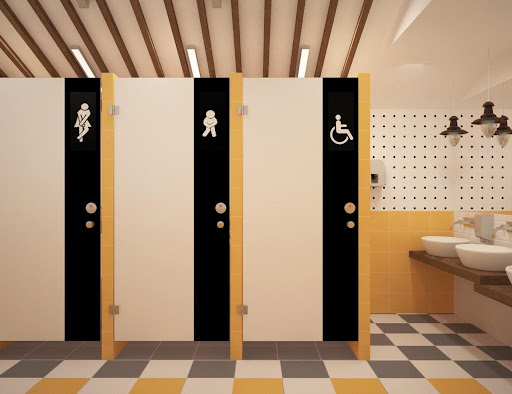Despite the current pandemic, it cannot be very comforting to think about complying with OSHA restroom requirements. The good news is bathroom safety doesn’t have to be difficult.
Employers can follow a few simple things to ensure their employees are safe in the bathroom. Keep reading for more information to stay in compliance.
Table of Contents
Cleanliness and Sanitation
Regularly cleaning and disinfecting shared restroom surfaces with a U.S. EPA-approved disinfectant is essential. The frequency of cleaning should depend on the number of people using the restroom. The bathroom must also have working toilets and hand-washing facilities that employees can use.
It should be free from offensive odors and uncleanliness. The toilet seats should be smooth and easily cleanable. Lighting should be adequate for cleaning and inspection purposes.
Stocked With Necessary Supplies
Stocking necessary supplies is key to complying with the OSHA bathroom requirements. Ensure each restroom has all essential supplies like toilet paper, hand soap, and paper towels.
Paper towels are essential in workplace restrooms. It helps workers keep their hands clean. It will avoid the spread of germs through hand-to-hand contact.
Location and Accessibility
It is required that employers provide restrooms that are both conveniently located and reasonably accessible. Bathrooms must be near the worksites of the employees. They must also be accessible by janitorial staff.
Ventilation and Security
Employers need to be mindful of the restroom requirements for business. Employers should provide separate, gender-specific facilities with adequate ventilation to stay compliant.
Restroom ventilation is essential to assist in the reduction of odors and gases and the spread of airborne diseases. It can make workers ill and put their safety at risk. Adequate ventilation is accomplished by proper maintenance of the HVAC systems in restrooms.
Employers also need to ensure the restroom is secure. The access should be limited to employees only. Employers must also provide secure storage areas in a toilet separate from the toilet area for each employee’s items.
Adequate lighting, working doors and locks, and signs indicating the gender of the restroom are also requirements. The toilet seats should be securely connected to the fixtures.
Number of Bathrooms
Employers should be mindful of the number of bathrooms provided for their workplace. OSHA mandates that the number of toilets available should be based on the number of employees. They should be a ratio of one toilet per fifteen employees.
Separate single-user restrooms should regulate the flow of traffic in the workplace. Employers should also account for employees performing physical labor, such as construction or manufacturing. Those employees may need more frequent use of the facilities.
Employers can opt for porta-potty rentals to provide more restrooms. For reference, you can check this porta potty rental company.
Be Informed of the OSHA Restroom Requirements to Stay Compliant
OSHA’s restroom regulations for employers are designed to ensure the health and safety of employees. It is important to stay in compliance as it can significantly improve the safe working environment of an organization. Employers should be aware of the OSHA restroom requirements.
Take action now and remain in compliance. It is also recommended to review OSHA regularly.
Did you find this article helpful? If so, check out the rest of our blog for more informative content!





